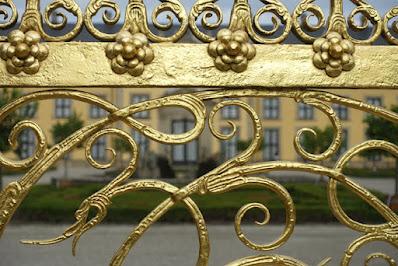
Gate to Herrenhausen Palace, Hanover, Germany
On our recent visit to Europe, Art and I spent three days in Hanover, once the seat of the Saxon Kings of Germany. While Art attended a conference, held at the site of the original palace, I toured the elaborate and enormous formal gardens, considered to be one of the most important baroque gardens in Europe.
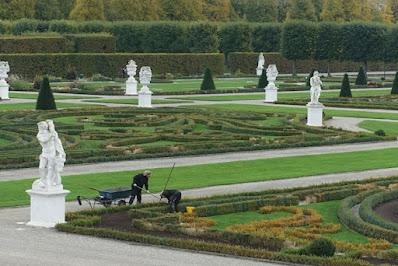
The gardens are a heritage of the Kings of Hanover. More than 300 years old, they are a striking example of grand horticultural style.

Herrenhausen Gardens
The Herrenhausen Gardens are located in Herrenhausen, an urban district of Lower Saxony's capital of Hanover are made up of the Great Garden, the Berggarten, the Georgengarten and the Welfengarten.

It was early October and many of the garden beds had already been prepared for winter, but there were still fall flowers blooming. And the hundreds of statues lining the avenues and decorating fountains remain a highlight year-round.
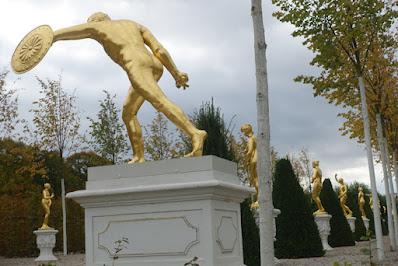
I started my walk in front of the palace, proceeding down the main avenue, passing pools and fountains and stopping along the way to explore the enclosed themed gardens. I could imagine fine ladies in long dresses and gentlemen in formal knee britches strolling among the plants long ago.
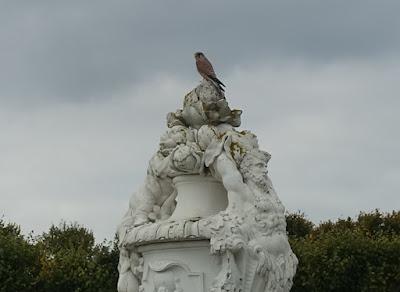
On my way back to the garden entrance I spotted a kestrel perched on one of the statues—perhaps scouting for something to eat. When I got too close, it flew away.
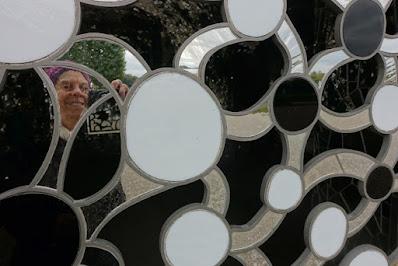
My final stop was at the Grotto—a building that was once an artificial cave with water jets and spring water, and decorated with shells, bronze and crystals. These were all been removed 150 years ago. I got a peek at myself in the mirror of one of the new windows.
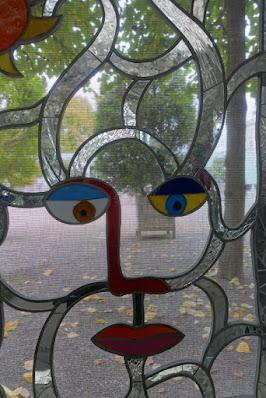
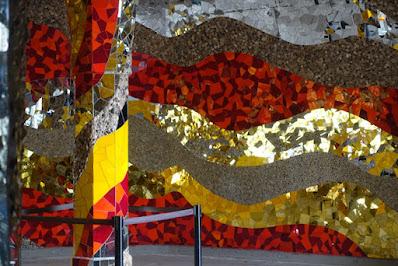
The central room, which the artist named "Spirituality" is a spiral of luminous yellow, red and gold, interspersed with river pebbles spanning out over the ceiling and walls.
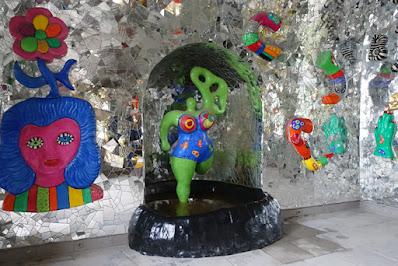
The silver mirror room with its fountain figure "Nana of Herrenhausen" represents the motto "Day and Life".
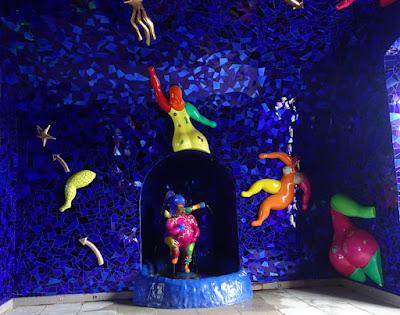
The blue room "Night and Cosmos" shows illustrations of shooting stars leading dancing female figures into the cosmos.
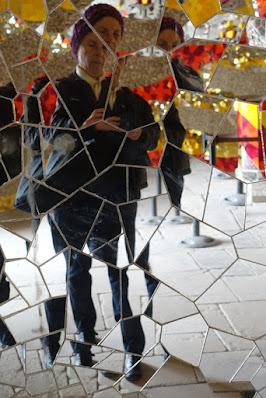
I never expected to find such a contrast in styles--the very formal designs of the large garden side by side with the exuberant colors and images of the Grotto. I think the royalty of long ago, if they came back today, would be surprised too!
